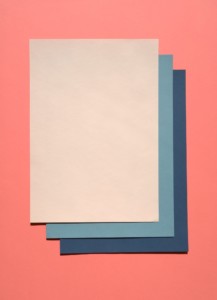Where Do Synthetic Organic Dyes Come From?
Most of the items we use every day incorporate synthetic organic dyes. From the clothes we wear, to our favorite pen – these all have synthetic organic dyes as part of their make up to give them color.
So, we ask: What exactly are these things called synthetic organic dyes? Where did they come from?
Where does a synthetic organic dye come from?
Synthetic organic dyes come from cracking crude oil. The specific colors, attributes, and ranges come from chemicals derived from petroleum products. They do not occur in nature, so we categorize them as manmade dyes. “Organic” comes from the idea that they are still derived from organic material, in this case, oil.
The first synthetic organic dye was discovered by accident by William Henry Perkin in 1856. He tried to synthesize quinine, a medication used to treat malaria. He ended up with a purple colored dye, similar to the natural dye created from mollusks.
After this initial discovery, many thousands of synthetic organic dyes came to market. Today, a few thousand have commercial value. Development of new dye classes often stems from fiber technology and the need for compatible dyes.
Which dyes are synthetic organic dyes?
Dyes are classified according to their solubility and chemical properties. The major classes of dyes are: acid, basic, direct, reactive, vat, disperse, azoic, sulphur, and mordant. Each dye class will dye certain substrates. Like mentioned earlier, some of the dyes will dye specific fibers and some are purified to sell as FD&C dyes. These dyes color food, pharmaceutical products, and cosmetics and are safe for consumption and use on the body.
Let’s take an in-depth look at the categories of synthetic organic dyes. This is the first step into selecting the best dye for your process.
Acid Dyes
Acid dyes are water soluble, anionic (with a negative charge), and used to dye wool, silk, nylon, and some modified acrylic fibers. Think of your comfy wool sweater.

Basic Dyes
Basic dyes are water soluble (with the help of acetic acid) and are cationic (with a positive charge). They dye paper, acrylic fibers, and sometimes wool or silk. Basic brown is often used to dye paper bags. Modified basic dyes invented by Dupont Chemical Company also fall into this category. These dye Orlon materials.
Direct Dyes
Direct dyes are substantive and can be applied in water near boiling, in a neutral environment, with the addition of salt. Direct dyes are used on cotton, paper, leather, wool, silk, and nylon. Some of them are indicators and biologic stains. Perfect for your favorite cotton t-shirt.

Reactive Dyes
Reactive dyes got their name by a chromophore in the dye’s structure that reacts with the fiber of the material. Cotton is the most common fiber dyed with reactive dyes, although the paper industry also uses them. If you have a pair of colored cotton socks in your drawer, they are probably dyed with reactive dyes.
Disperse Dyes
Disperse dyes are not soluble in water and were developed to dye cellulose acetate. They can also be used to dye polyester, nylon cellulose triacetate, and acrylic fibers. There are different procedures for dyeing the various fibers for these dyes. They serve as another example of Dupont inventing a new material and not having a dye to color it. As a result, they created high temperature disperse dyes to dye the material. You’ll find most outdoor furniture fabric dyed with disperse dyes, because of its natural non-soluble properties.

Vat Dyes
This unusual class of dye is insoluble in water and cannot directly dye any fiber. Most often used for cotton, vat dyes need a reduction, then an oxidation reaction before dyeing the fiber. Their color is very wash-fast and found in toweling and sheeting products. The premier vat dye, indigo, is now known as the blue in blue jeans.
Azoic Dyes
Azoic dyes are a unique dye class since they use a technique that produces a dye on or in the fiber. By controlling the diazoic and coupling components, different shades can be produced. This type of dyeing is not used as often anymore because the chemicals used for the process are toxic. Because of this, you probably do not have anything at home dyed with azoic dyes.
Sulphur Dyes
Sulphur dyes dye cotton in darker shades. They can also be used to dye leather. Leather in your shoes may be dyed with a sulphur dye.

Mordant Dyes
Mordant dyes are almost the same as azoic dyes, but they pair with a mordant to improve wash-fastness and light-fastness. The mordant is usually a heavy metal compound. There are two reasons to take caution when choosing the dye. First, some metals can destroy the dye compound. Second, some heavy chemicals are dangerous to the environment.
Mordant dyes played an important part in our country’s history because they colored the uniforms of our Army, Navy, and Airforce. Today, they are not used as often. To improve economical value and safety, chemists developed new dyes with the mordants included in their dye molecules. If you have an upscale black wool sweater, it’s deep, rich shade may be from a mordant dye.
There are many different classes of synthetic organic dyes. While they do have specific substrates they are most compatible with, some cross over. For example, a direct red can dye cotton, nylon, paper, and wood. These flexible-use dyes are few and far between, but are invaluable to coloring our world.
The next time you are writing with your favorite pen, take a moment to ponder its ink color created using a synthetic organic dye. And your new favorite t-shirt in fluorescent yellow, also dyed with a synthetic organic dye. Can you imagine a world without color? We can’t.

Explore our colorant product lines.
One Comment
Comments are closed.



[…] Synthetic organic dyes come from cracking crude oil. The specific colors, attributes, and ranges come from chemicals derived from petroleum products. They do not occur in nature, so we categorize them as manmade dyes. “Organic” comes from the idea that they are still derived from organic material, in this case, oil. via […]